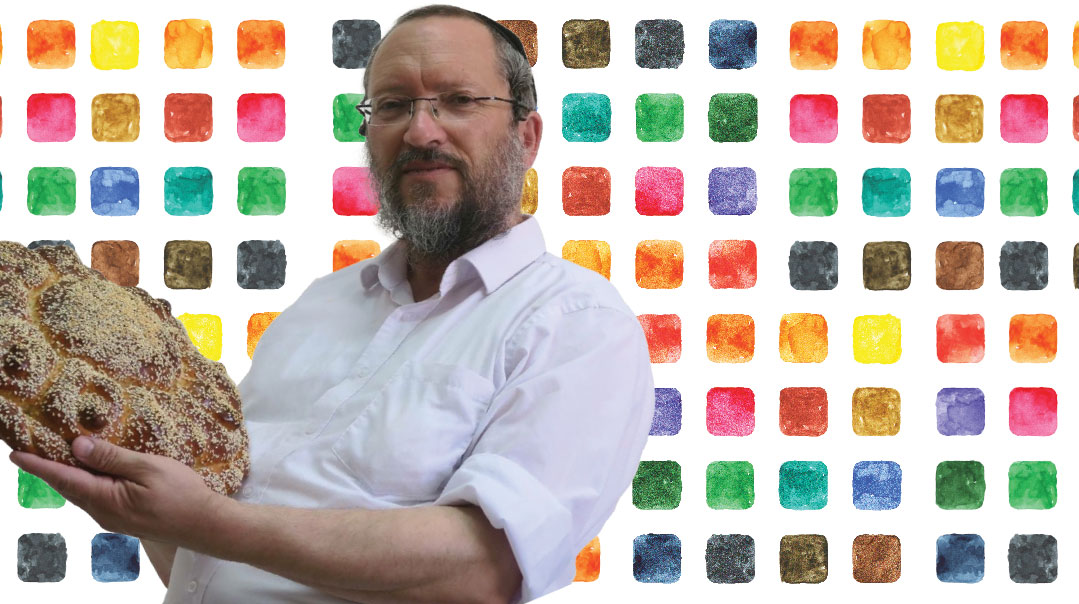With Flying Colors
| January 15, 2020Artist and cheder Rebbi Mota Brim creates a classroom of color

(Photos: Flash90, Family archives)
With his chassidish levush and graying beard, veteran preschool teacher Reb Mota Brim might not fit the profile of your typical artist. But this Boyaner chassid, a resident of the Jerusalem suburb of Beitar Illit, says he can’t walk down the street without creating paintings in his mind’s eye. He’s approaching 60, but has been attached to color, brushes, and sketch pads for as long as he can remember. “I wasn’t born with a brush in my hand, but in my stomach,” he says. “I always loved drawing, but I couldn’t even explain it to myself.”
When Mota was three years old, he contracted measles and had to spend hours alone in his room. To alleviate the boredom, his mother supplied him with colorful Plasticine to play with — and Mota spent hours molding the pliant material into shapes. A doctor came to check on him in the evening, and noticing the child’s creations, told his parents, “It’s a pity, you know — this boy is a natural artist, but you probably won’t let him develop his talents.”
The doctor was right about the first part, but thankfully not about the second.
“As a child I was obsessed with drawing,” says Brim, “and what I loved most was drawing near flowing water. Well, we didn’t exactly have a stream running through our small Jerusalem apartment, so I would go into the kitchen, turn on the faucet, lie down on the floor, and draw. Somehow that would give me the greatest inspiration, and I’m grateful that my parents didn’t object to this strange habit. I guess they figured my soul needed it.”
As a child he learned in the Jerusalem Talmud Torah where his father was a melamed. “When I was a child,” he admits, “many Yerushalmi melamdim didn’t seem to be aware that children could have other needs aside from learning, and the expectation was that you would learn well and not occupy your mind with anything else. The melamdim repeated the material again and again, and for a lot of children, it became pretty monotonous. They never considered the possibility that learning and davening could be made into an experience.
“Some children couldn’t concentrate and meet the high expectations, and teachers reacted with a heavy hand. And then the kid would go home and tell his parents, and they wouldn’t understand. ‘So why did you behave that way?’ they would say, taking for granted that if the melamed hit or punished their child, it was for a good reason.”
Brim says he was fortunate. He wasn’t a particularly distinguished student, but he wasn’t a troublemaker either, and on the whole was considered a good boy. In drawing, however, he was a star.
“The melamdim never even noticed it, but my friends did — they would crowd around my desk during recess and ask me to sketch them. So even though I was a pretty borderline student, I felt appreciated and valued.
Oops! We could not locate your form.













